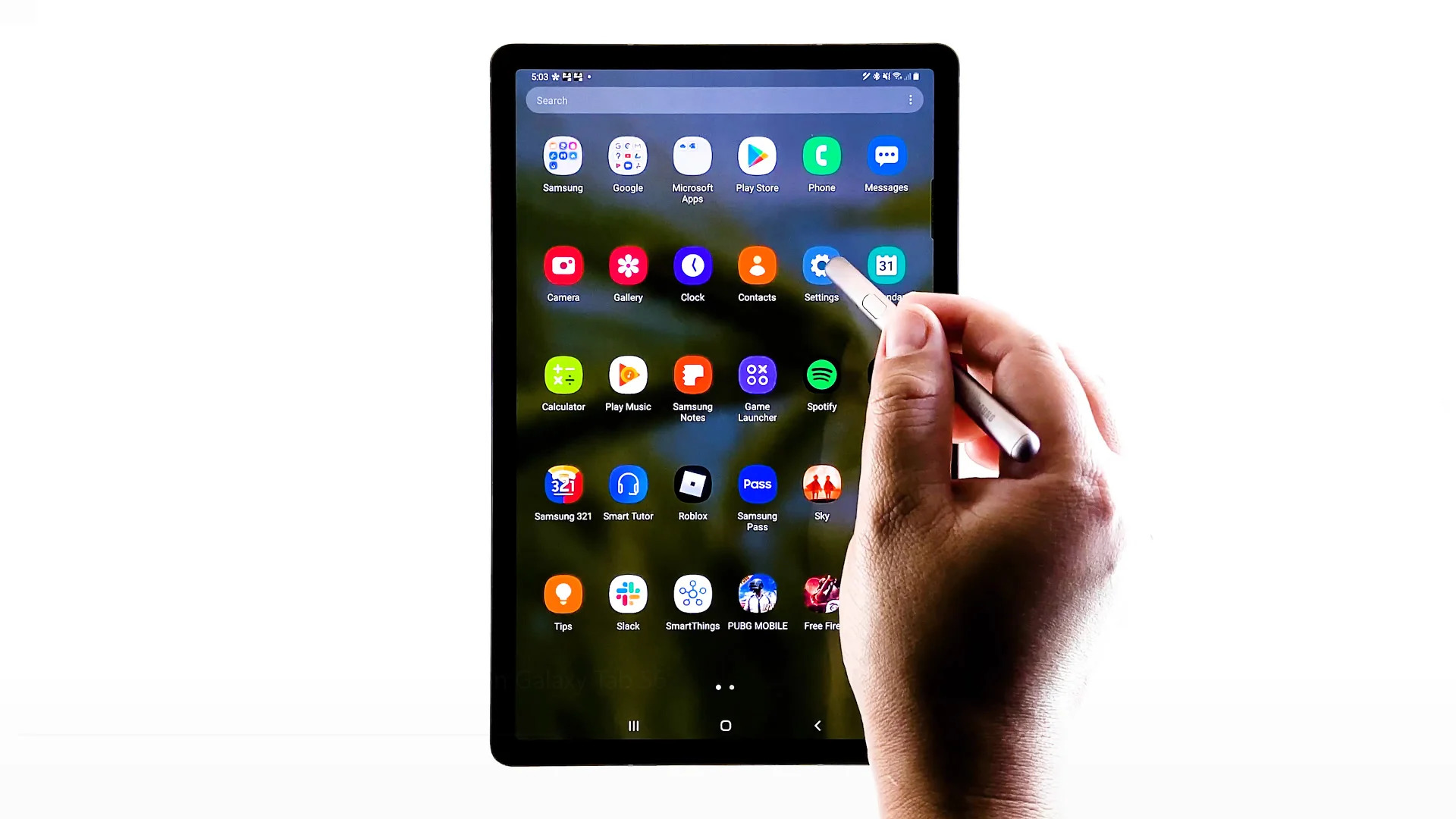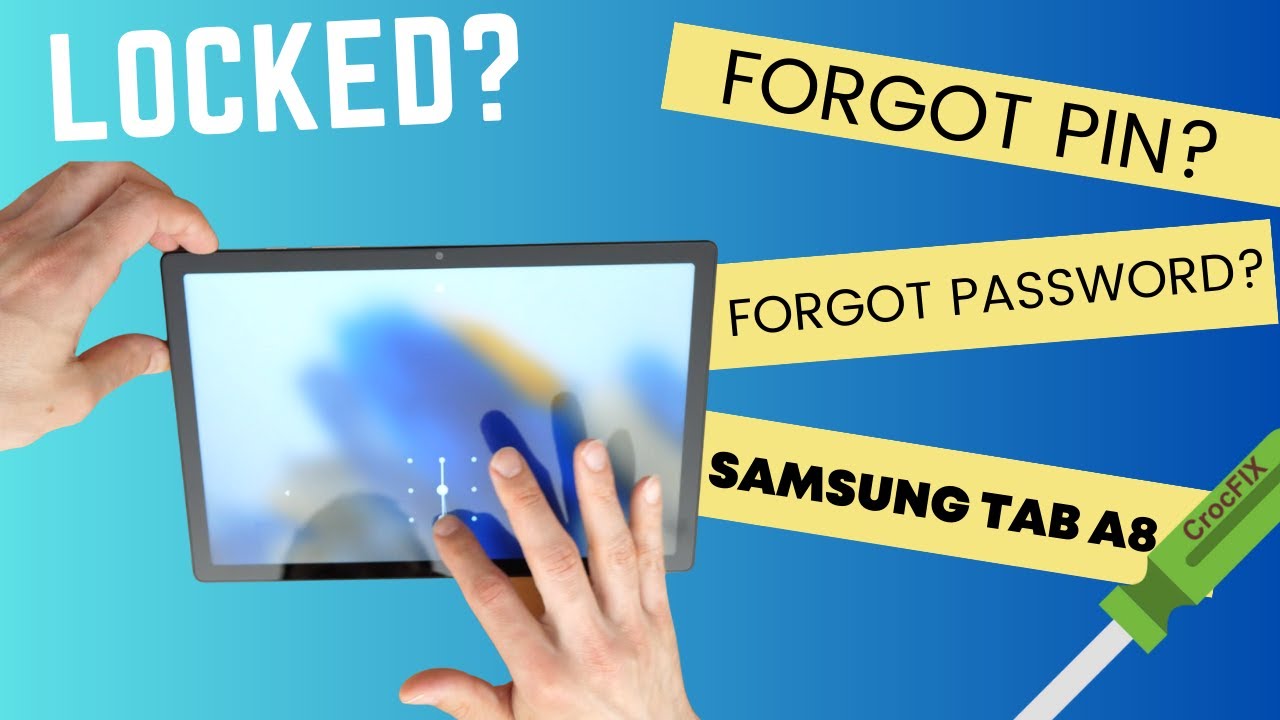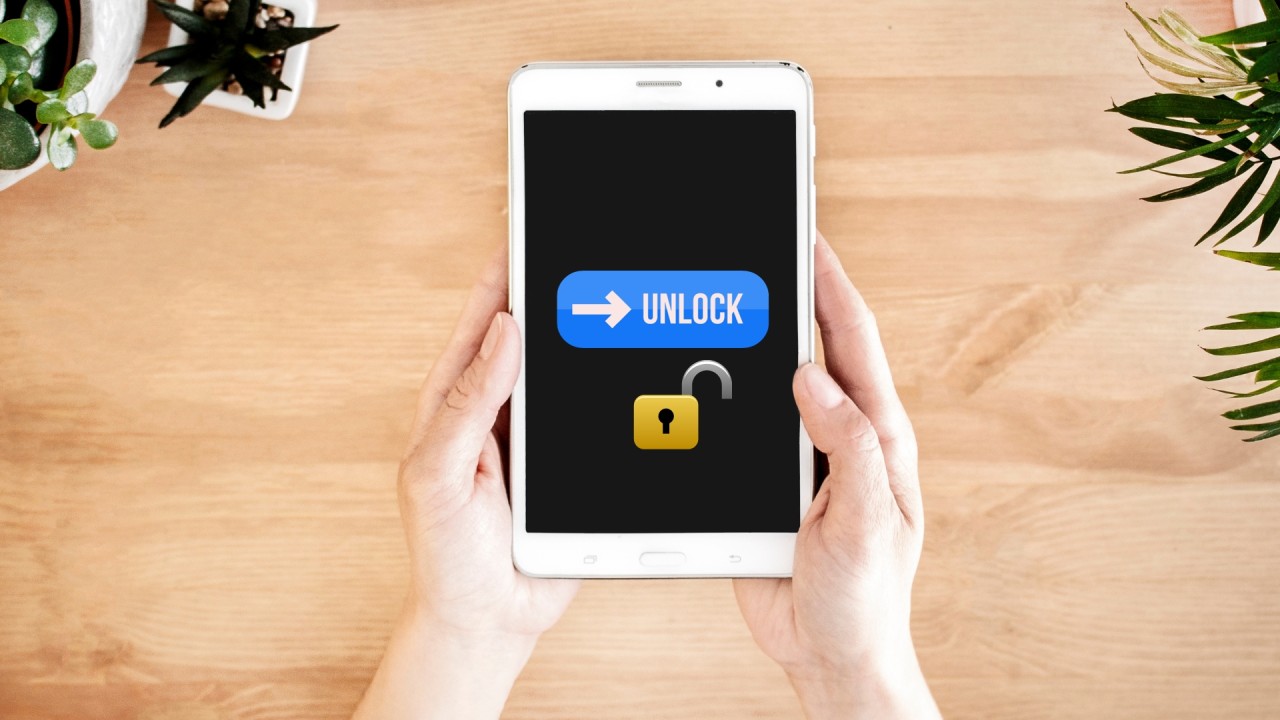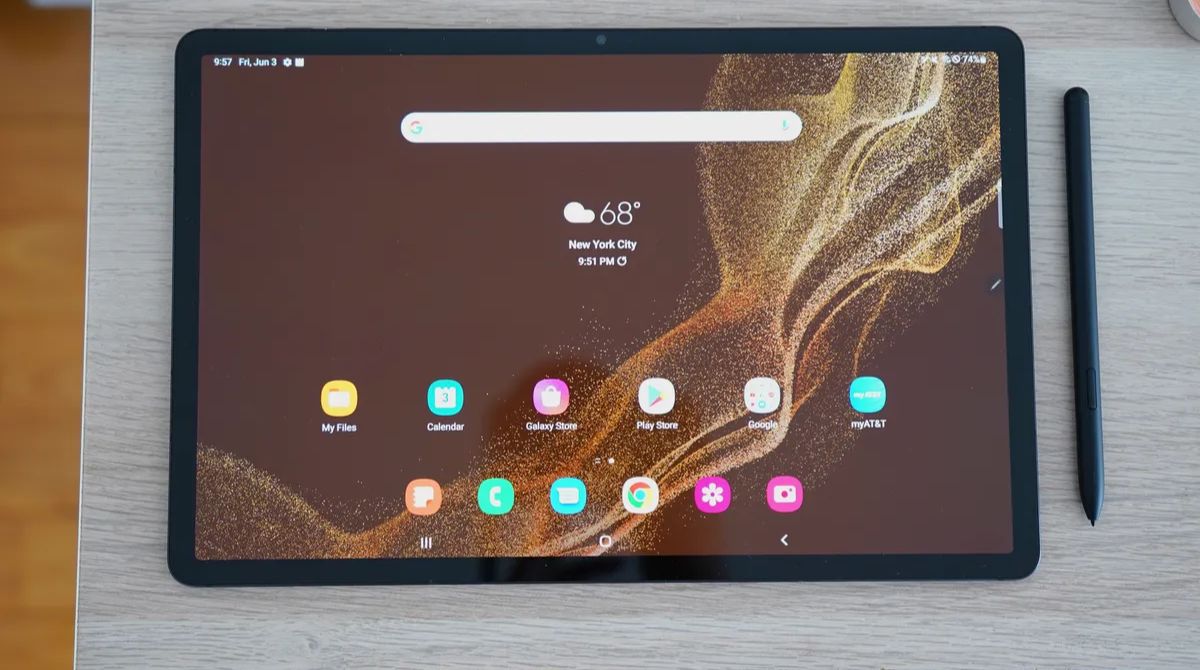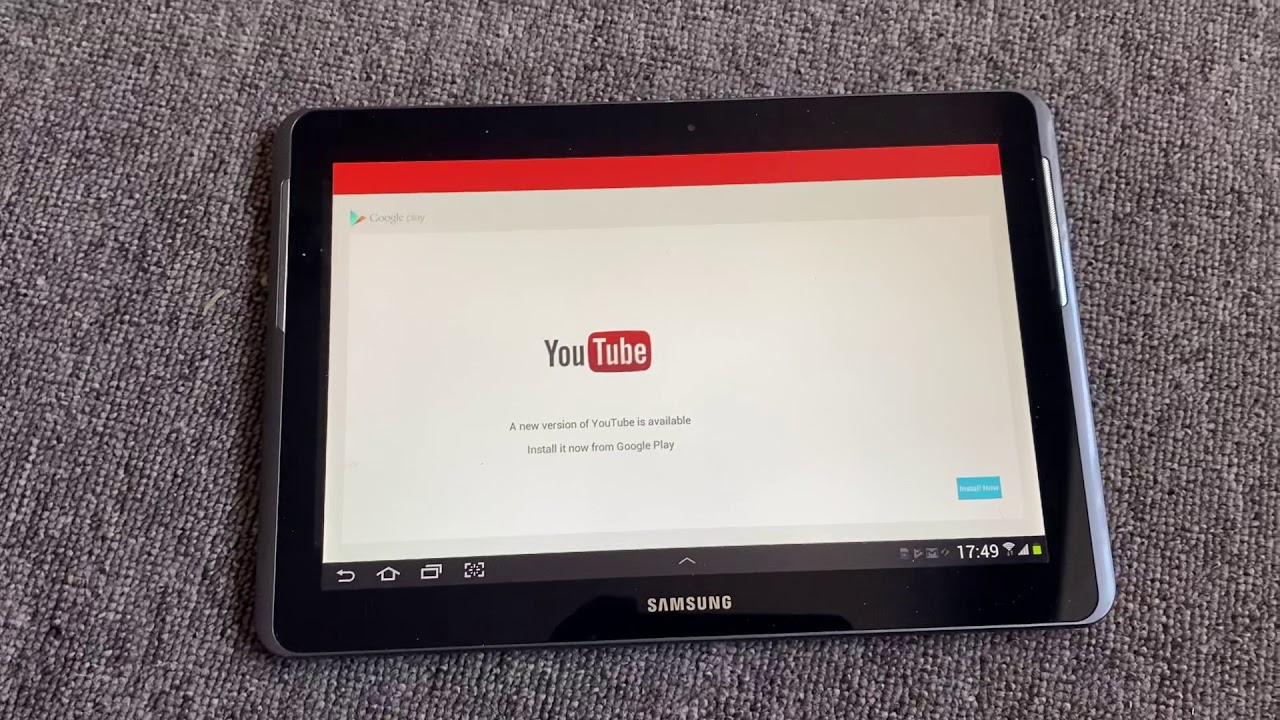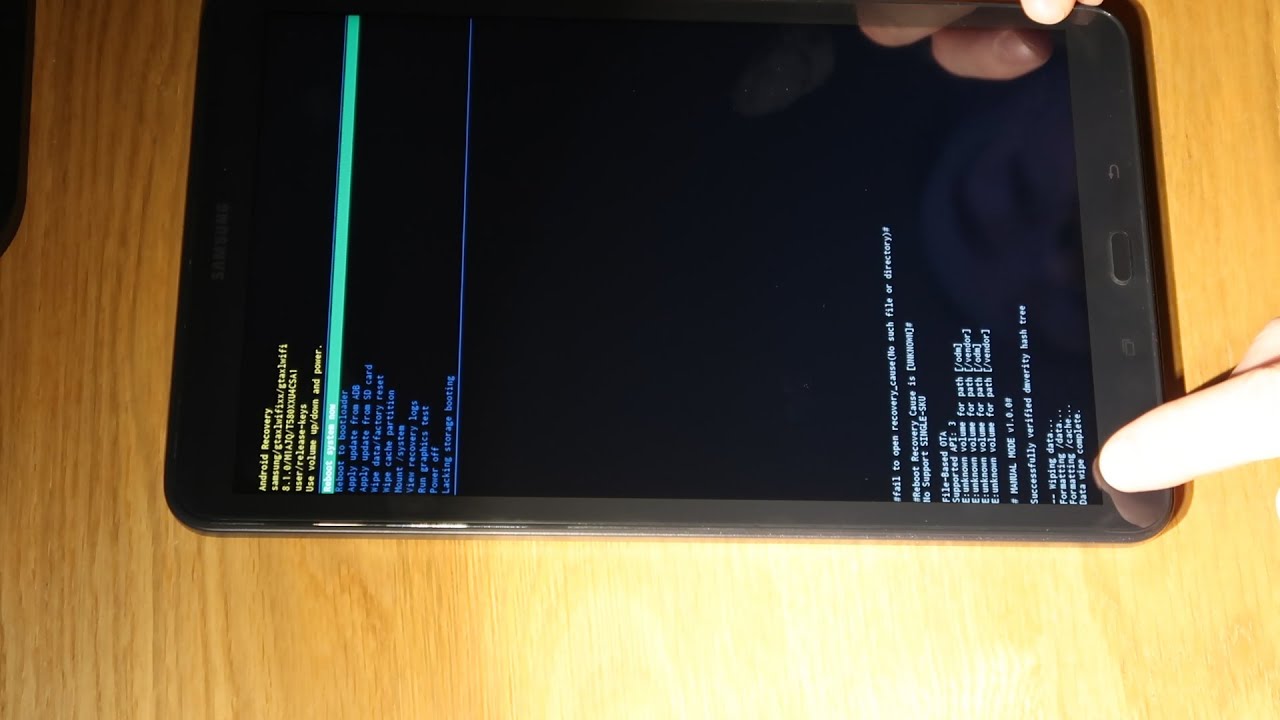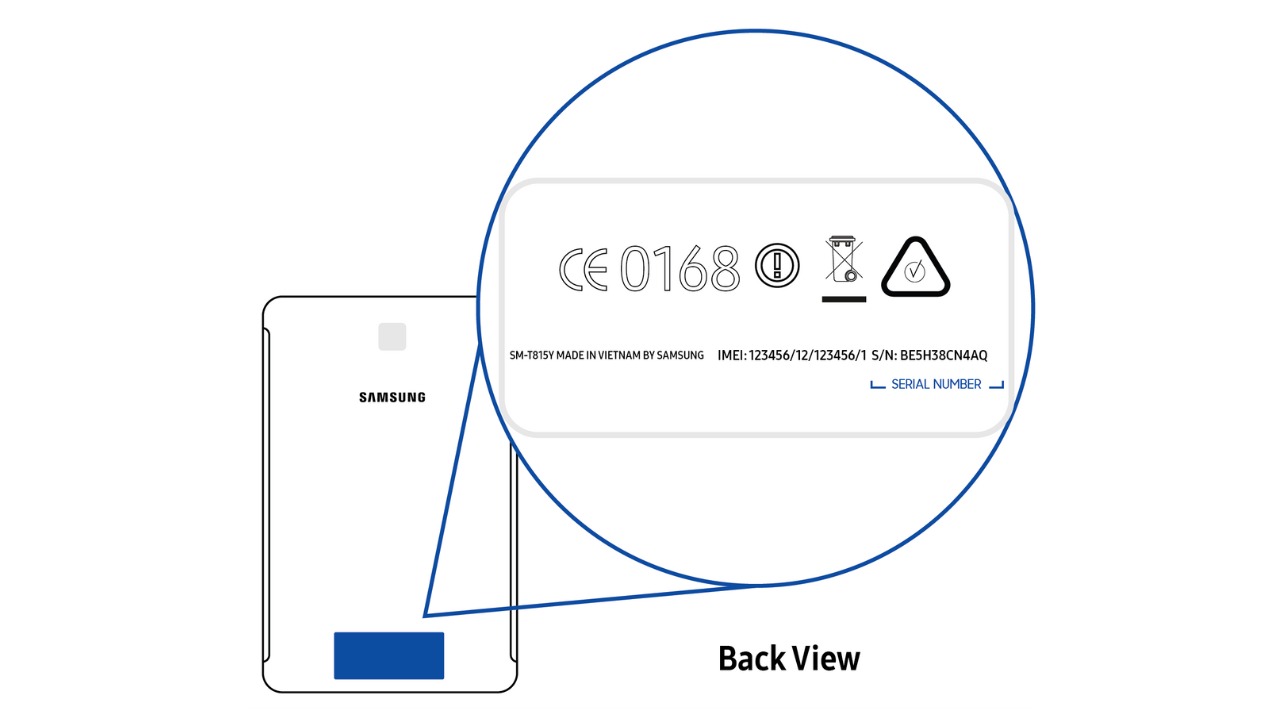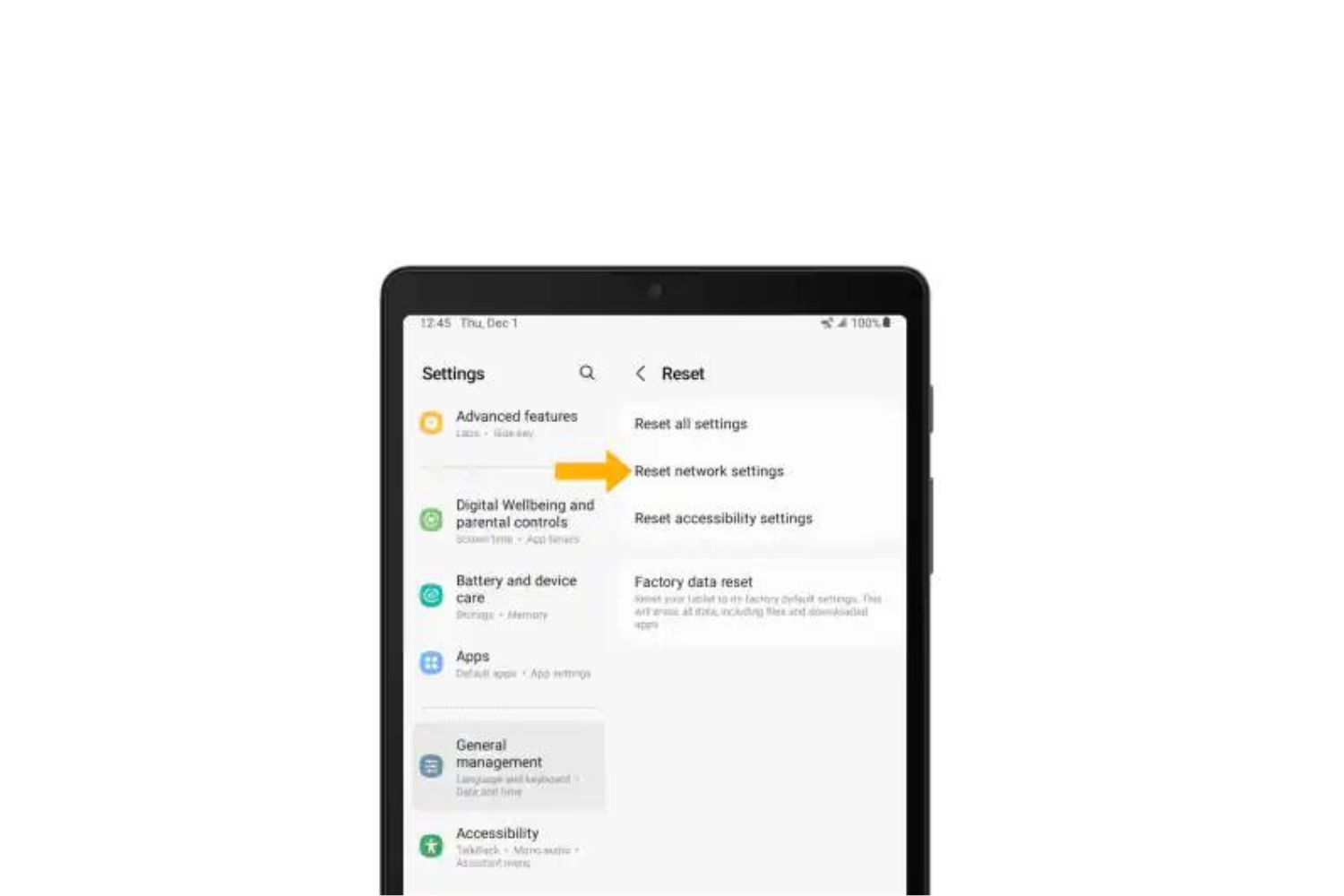Introduction
Welcome to the world of Samsung tablets! These versatile devices offer a range of features and settings that allow you to customize your tablet experience to suit your needs. Whether you’re a tech-savvy enthusiast or a first-time tablet user, knowing how to navigate the settings is essential for optimizing your device’s performance and personalizing it to your preferences.
In this guide, we will walk you through the process of finding and accessing the Settings app on your Samsung tablet. We will also explore the various settings and options available to you, from display and sound settings to wireless connectivity and advanced configurations.
By familiarizing yourself with these settings, you can enhance your tablet’s usability, tailor it to meet your specific requirements, and maximize your enjoyment of the device. So let’s dive in and unravel the world of settings on your Samsung tablet!
Note: The steps and options discussed in this guide may vary slightly depending on the model and version of your Samsung tablet.
Finding the Settings App
Locating the Settings app on your Samsung tablet is the first step towards exploring and customizing its features. Here are a few simple methods to help you find the Settings app:
- Option 1: Home Screen Shortcut: On your tablet’s home screen, look for the gear icon labeled “Settings.” Tap on the icon to open the Settings app.
- Option 2: App Drawer: If you can’t find the Settings app on the home screen, access the app drawer by swiping up from the bottom of the screen or tapping the app drawer icon (usually located in the center or right corner of the dock). From the app drawer, scroll through the list of applications, and locate the Settings app.
- Option 3: Search: If you still can’t find the Settings app, swipe down on the home screen to reveal the notification panel, then swipe down again to access the search bar. Type “Settings” in the search bar, and the app should appear in the search results. Tap on the Settings app to open it.
Once you have successfully located the Settings app, you are ready to delve into the various configuration options and settings available on your Samsung tablet.
Accessing the Quick Settings Panel
The Quick Settings panel provides quick access to commonly used settings on your Samsung tablet. To access the Quick Settings panel, follow these steps:
- Step 1: Swipe down from the status bar at the top of the screen using one finger.
- Step 2: The Quick Settings panel will appear, displaying a variety of icons representing different settings and features.
- Step 3: Swipe left or right across the panel to view additional settings options.
- Step 4: Tap on a specific icon to toggle the corresponding setting on or off. For example, you can adjust the brightness, Wi-Fi, Bluetooth, and more directly from the Quick Settings panel.
The Quick Settings panel offers a convenient and efficient way to access frequently used settings without the need to navigate deep into the Settings app. It allows you to make quick adjustments to your tablet’s configuration, saving you time and effort.
Note: The appearance and arrangement of icons in the Quick Settings panel may vary depending on the model and version of your Samsung tablet.
Navigating the Settings Menu
Once you have accessed the Settings app on your Samsung tablet, you will find yourself in the main settings menu. The settings menu is organized into different categories, making it easy to navigate and locate specific options. Here’s how to navigate the settings menu:
- Main Menu: The main settings menu consists of a list of categories, such as “Connections,” “Display,” “Sound,” “Accounts,” and more. Scroll up or down to view the different categories.
- Subcategories: Tap on a category to access its subcategories and specific settings options. For example, within the “Display” category, you may find subcategories like “Brightness,” “Screen timeout,” and “Font size and style.”
- Back Button: To go back to the previous menu or category, tap the back button located at the top-left or top-right corner of the screen. This allows you to navigate through the settings menu with ease.
- Search Bar: If you have a specific setting in mind but are unsure of its location, you can use the search bar at the top of the settings menu. Simply type in keywords related to the setting you are looking for, and the menu will display relevant options.
Navigating the settings menu is straightforward and allows you to explore and customize various aspects of your Samsung tablet. Take your time to browse through the different categories and subcategories to familiarize yourself with the available settings options.
Note: The arrangement and naming of categories may vary slightly depending on the model and version of your Samsung tablet.
Customizing Display Settings
Your Samsung tablet offers a range of display settings that allow you to personalize the visual experience to your liking. Here’s how you can customize the display settings:
- Brightness: Adjust the brightness of your tablet’s screen by going to “Settings” > “Display” > “Brightness.” You can manually slide the brightness bar to your preferred level or enable the “Adaptive brightness” option for automatic adjustments based on your environment.
- Screen Timeout: Set the duration of inactivity before your tablet’s screen turns off to conserve battery. Go to “Settings” > “Display” > “Screen timeout” and choose the desired timeout period, such as 15 seconds, 30 seconds, or longer.
- Wallpaper and Themes: Personalize your tablet’s home and lock screens by selecting your preferred wallpaper. You can also apply themes to change the overall appearance of your device. Access these options by going to “Settings” > “Wallpaper and themes.”
- Font size and style: Adjust the size and style of the text displayed on your tablet by going to “Settings” > “Display” > “Font size and style.” Choose from the available options or tap “Download fonts” to explore additional font styles.
- Screen Mode: Depending on your tablet model, you may have different screen modes available, such as “Adaptive display,” “AMOLED cinema,” or “Basic.” These modes alter color saturation and temperature. Find the screen modes under “Settings” > “Display” > “Screen mode.”
- Blue light filter: Protect your eyes from excessive exposure to blue light by enabling the blue light filter. This feature reduces blue light emissions and adjusts the screen’s color temperature for a more comfortable viewing experience. You can find the blue light filter under “Settings” > “Display” > “Blue light filter.”
By customizing the display settings on your Samsung tablet, you can create a visually pleasing and comfortable viewing experience that suits your preferences and needs. Explore these options and fine-tune your tablet’s display settings to achieve the desired look and feel.
Adjusting Sound and Notifications
Sounds and notifications play a crucial role in your Samsung tablet’s user experience. Here’s how to adjust sound and notification settings to suit your preferences:
- Volume: Control the volume of your tablet’s ringtone, media, notifications, and system sounds by pressing the volume buttons located on the side of your device. You can also access the volume settings by going to “Settings” > “Sounds and vibration” > “Volume.”
- Sound Modes: Customize sound profiles based on different situations. For example, you can set your tablet to “Sound” mode when you want to receive all notifications audibly, or switch to “Vibrate” or “Silent” mode when you need your tablet to be discreet. Access sound modes in “Settings” > “Sounds and vibration” > “Sound mode.”
- Notification Sounds: Choose the sound that plays when you receive notifications. Go to “Settings” > “Sounds and vibration” > “Notification sounds” and select from the available options or tap “Add” to use your custom notification sound.
- Do Not Disturb: Enable “Do Not Disturb” mode to temporarily silence calls, notifications, and alerts. Configure this feature to allow important calls or customize the schedule for automatic activation. Find “Do Not Disturb” settings under “Settings” > “Sounds and vibration” > “Do Not Disturb.”
- App Notifications: Manage individual app notifications to control how and when you receive alerts. Go to “Settings” > “Notifications” to view a list of installed apps, and customize the notification settings for each app according to your preferences.
- Advanced Sound Settings: Explore advanced sound settings, such as “Sound quality and effects” and “Separate app sound.” These settings allow you to fine-tune audio output and control audio playback for specific apps. Access these options in “Settings” > “Sounds and vibration” > “Advanced sound settings.”
By adjusting sound and notification settings, you can tailor your Samsung tablet’s auditory experience to match your preferences and ensure that you receive alerts and notifications in a way that suits your needs.
Managing Wireless and Network Settings
Wireless and network settings are essential for connecting to the internet, accessing networks, and managing connectivity preferences on your Samsung tablet. Here’s how you can manage these settings:
- Wi-Fi: Connect to Wi-Fi networks by going to “Settings” > “Connections” > “Wi-Fi.” Toggle the Wi-Fi switch to enable Wi-Fi, and select a network from the available options. Enter the password if prompted, and you’ll be connected to the Wi-Fi network.
- Mobile Data: If your tablet supports cellular connectivity, you can enable or disable mobile data by going to “Settings” > “Connections” > “Data usage” > “Mobile data.” Use this option to conserve data or enable it when you’re away from Wi-Fi networks.
- Bluetooth: Turn on Bluetooth functionality by going to “Settings” > “Connections” > “Bluetooth.” Enable Bluetooth, and your tablet will start scanning for nearby Bluetooth devices. Tap on a device to pair and connect it to your tablet.
- Hotspot and tethering: Share your tablet’s internet connection with other devices by setting up a Wi-Fi hotspot or using USB or Bluetooth tethering. Find these options under “Settings” > “Connections” > “Mobile hotspot and tethering.”
- VPN: Configure Virtual Private Networks (VPNs) on your tablet for secure and private internet access. Go to “Settings” > “Connections” > “VPN” to set up and manage VPN connections on your device.
- Network Operators: If your tablet supports it, you can manually select a network operator or allow your tablet to automatically select the best network. Access this option in “Settings” > “Connections” > “Mobile networks” > “Network operators.”
- Data Usage: Keep track of your data usage and set data limits to avoid exceeding your plan’s allocation. Go to “Settings” > “Connections” > “Data usage” to view your data usage details and configure related settings.
Managing wireless and network settings on your Samsung tablet gives you control over connectivity options, internet access, and data usage. By understanding and customizing these settings, you can optimize your tablet’s connectivity and ensure a seamless online experience.
Personalizing the Device
Personalizing your Samsung tablet allows you to make it uniquely yours, reflecting your style and preferences. Here are some ways to personalize your device:
- Wallpapers and Themes: Customize the look and feel of your tablet by changing wallpapers and applying themes. You can access these options by going to “Settings” > “Wallpaper and themes.” Choose from a selection of pre-installed wallpapers or download new ones to suit your taste.
- Widgets and Home Screen: Add widgets to your home screen for quick access to your favorite apps or live information. Long-press on an empty area of the home screen, select “Widgets,” and choose the desired widget to add it. You can also rearrange app icons and create folders for a personalized home screen layout.
- App Icons: Change the appearance of app icons on your home screen. On certain Samsung tablets, you can apply icon packs or change individual app icons. Long-press on an app icon, select “Edit,” and choose the icon style you prefer.
- Lock Screen: Customize your lock screen by adding widgets, changing the wallpaper, or even displaying your personal information. Access lock screen settings by going to “Settings” > “Lock screen” and explore the available options to make your lock screen visually appealing and functional.
- Accessibility: Modify accessibility settings to accommodate your needs. Go to “Settings” > “Accessibility” and explore options such as font size, display size, color inversion, and more for a personalized user experience.
- One-Handed Mode: If you find it challenging to use your tablet with one hand, enable one-handed mode. Swipe down from the top of the screen with one finger to access the notification panel, then swipe down again and tap the “One-handed mode” icon to activate it. This shrinks the display to a smaller size, making it easier to reach all areas of the screen with one hand.
Personalizing your Samsung tablet not only enhances its visual appeal but also improves usability and efficiency. Take the time to explore these customization options and make your tablet truly your own.
Configuring Accounts and Sync Settings
Configuring accounts and sync settings on your Samsung tablet allows you to integrate your device with various online services and keep your data seamlessly updated across multiple devices. Here’s how you can manage accounts and sync settings:
- Google Account: Add your Google account to access Gmail, Google Calendar, Google Drive, and other Google services. Go to “Settings” > “Accounts and backup” > “Accounts” and tap on “Add account” to add your Google account.
- Samsung Account: Sign in with your Samsung account to access exclusive features and services. Tap on “Settings” > “Accounts and backup” > “Accounts” > “Add account” and select “Samsung Account” to sign in or create a new account.
- Cloud Storage: Sync your files and data to the cloud for easy access and backup. Samsung tablets offer integration with various cloud storage services, such as Samsung Cloud or third-party providers like Google Drive or Dropbox. Access cloud storage settings under “Settings” > “Accounts and backup” > “Cloud and accounts.”
- Auto-Sync: Control which apps and data are automatically synced across your devices. Go to “Settings” > “Accounts and backup” > “Accounts” > “Select your account” and toggle the sync options for each app according to your preferences.
- Backup and Restore: Ensure your data is safe by enabling the backup and restore option on your tablet. This feature automatically backs up your device data, including app data, settings, and more. Access backup and restore settings through “Settings” > “Accounts and backup” > “Backup and restore.”
- Account Settings: For each account added to your tablet, you can further customize the settings to suit your needs. Tap on “Settings” > “Accounts and backup” > “Accounts” and select the desired account to adjust its settings, such as sync frequency or notifications.
Configuring accounts and sync settings on your Samsung tablet allows you to stay connected and keep your data seamlessly in sync across various devices and services. Take advantage of these features to streamline your digital experience and ensure your important information is readily accessible.
Controlling Privacy andamp; Security
Privacy and security are paramount when it comes to your Samsung tablet. By taking control of the privacy and security settings, you can ensure the safety of your personal information and protect your device from potential threats. Here are some key settings to consider:
- Lock Screen: Set up a secure lock screen to prevent unauthorized access to your tablet. Go to “Settings” > “Lock screen” > “Screen lock type” and choose between options like PIN, Password, Pattern, or biometric authentication methods like fingerprint or face recognition.
- App Permissions: Manage the permissions granted to each app on your tablet. Go to “Settings” > “Apps” > select an app > “Permissions” to view and control the permissions granted to the app. Adjust the permissions according to your preferences and revoke any unnecessary access.
- Secure Folder: Create a secure area on your tablet to store sensitive files, photos, and apps. Use the “Secure Folder” feature, accessible through “Settings” > “Biometrics and security” > “Secure Folder,” to keep your private data separate from the rest of the device.
- Find My Mobile: Enable the “Find My Mobile” feature to track your lost or stolen tablet. This feature allows you to locate your device, lock it remotely, and even erase its data if necessary. Enable “Find My Mobile” in “Settings” > “Biometrics and security” > “Find My Mobile.”
- Privacy Settings: Customize your privacy settings to control data sharing and app behavior. In “Settings” > “Privacy,” you can adjust options such as app permissions, location services, diagnostics, app usage history, and more.
- Secure Browsing: Protect your browsing activities by using secure browsers and enabling features like encrypted connections (HTTPS). You can also activate the “Safe Browsing” feature in Google Chrome to warn you about potentially dangerous websites.
- Auto Update Apps: Keep your apps up to date with the latest security patches and bug fixes by enabling automatic app updates. Go to the Play Store > “Settings” > “Auto-update apps” and choose the desired option.
- Device Maintenance: Regularly check your device’s overall health and security by using the built-in “Device Care” or “Device Maintenance” feature. This allows you to optimize performance, scan for malware, and detect potential security risks.
By controlling privacy and security settings on your Samsung tablet, you can protect your personal data and ensure a safer digital environment. Take the time to review and adjust these settings periodically to stay ahead of potential risks and vulnerabilities.
Managing Apps and Permissions
Efficiently managing apps and permissions on your Samsung tablet allows you to control how apps function, safeguard your privacy, and optimize your device’s performance. Here are some tips on managing apps and permissions:
- App Drawer: Access the app drawer to view and manage all installed apps on your tablet. Swipe up from the home screen or tap on the app drawer icon to launch it.
- App Settings: Tap and hold on an app icon from the app drawer or home screen, then select “App info” to access its settings. From here, you can manage notifications, permissions, storage, battery usage, and more.
- Uninstall or Disable Apps: Remove or disable unwanted pre-installed or downloaded apps that you no longer use. You can uninstall apps by going to “Settings” > “Apps” > “App info” > “Uninstall” or “Disable,” depending on the app and your device’s software.
- App Permissions: Control the permissions granted to each app on your tablet to protect your privacy and limit access to sensitive data. Go to “Settings” > “Apps” > “App info” > “Permissions” to review and adjust app permissions as needed.
- App Notifications: Customize notification settings for individual apps to manage the frequency and type of alerts you receive. Visit “Settings” > “Apps” > “App info” > “Notifications” to configure app-specific notification preferences.
- App Updates: Keep your apps up to date to ensure you have access to the latest features, bug fixes, and security patches. Configure automatic app updates in the Google Play Store settings or manually update apps from the “My Apps and Games” section in the Play Store.
- Data Usage: Monitor and manage app data usage to prevent excessive bandwidth consumption. Go to “Settings” > “Apps” > “App info” > “Mobile data & Wi-Fi” to view data usage for individual apps and adjust settings like background data restrictions.
- App Defaults: Set default apps for actions like web browsing, messaging, or opening specific file types. Visit “Settings” > “Apps” > “Default apps” to manage the default app settings on your tablet.
- App Organizing: Organize your app icons by creating folders or adding them to the home screen or dock for quick access. Long-press on an app icon and drag it to the desired location or create a folder by dragging one app icon onto another.
By effectively managing apps and permissions on your Samsung tablet, you can create a more streamlined and secure app experience. Take the time to review, organize, and customize your apps to suit your needs and preferences.
Exploring Advanced Settings
Beyond the standard settings options, your Samsung tablet offers a range of advanced settings that allow you to further customize and enhance your device. Here are some advanced settings worth exploring:
- Developer Options: Unlock the hidden developer options on your tablet to access additional settings and features. Go to “Settings” > “About tablet” > “Software information” > “Build number.” Tap the build number multiple times until you see a message that developer options are enabled. You can then access developer options from the main settings menu.
- Gestures and Motions: Navigate your tablet and perform specific actions using gestures and motions. For example, you can enable features like “Palm swipe to capture” to take screenshots, “Smart stay” to keep the screen on while you’re looking at it, or “Direct call” to automatically make a call by bringing the device to your ear. Explore these options in “Settings” > “Advanced features.”
- S Pen Settings (for compatible devices): If your Samsung tablet includes an S Pen, explore the settings dedicated to this stylus. Adjust features like Air Actions, S Pen button functionality, screen off memo, and more in “Settings” > “Advanced features” > “S Pen.”
- Motion and Gestures: Configure various motion and gesture controls to navigate your tablet more easily. These settings allow you to perform actions such as flipping to mute, double-tap to wake, or smart controls. Find these options in “Settings” > “Advanced features” > “Motions and gestures.”
- Accessibility Settings: Explore advanced accessibility settings to accommodate specific needs. These settings include features like text-to-speech, color inversion, magnification gestures, and more. Go to “Settings” > “Accessibility” to access and customize these options.
- Battery Optimization: Optimize battery usage by enabling features such as “Battery Saver” or “Optimize battery usage.” These settings help conserve battery life by reducing background activity and adjusting system performance. Access battery optimization settings via “Settings” > “Device care” > “Battery.”
- System Updates: Regularly check for system updates to ensure your tablet has the latest security patches and software enhancements. You can find system update settings in “Settings” > “Software update” > “Download and install.”
- Language and Input: Customize your tablet’s language and keyboard settings in the “Language and input” section of the settings menu. You can select various system languages, keyboard layouts, input methods, and adjust related options.
Exploring advanced settings allows you to unlock additional features and optimizations on your Samsung tablet. Take some time to delve into these settings and utilize the advanced options that suit your needs and enhance your tablet experience.
Resetting the Tablet to Factory Settings
Sometimes, you may need to reset your Samsung tablet to its factory settings, either to troubleshoot issues or prepare the device for resale. Here’s how you can perform a factory reset:
- Backup Your Data: Before resetting your tablet, it’s crucial to back up any important data, such as photos, videos, documents, and app data, to prevent permanent loss.
- Settings Reset: The easiest way to initiate a factory reset is through the tablet’s Settings app. Go to “Settings” > “General management” > “Reset” > “Factory data reset.”
- Confirm: Review the information presented and select the option to erase all data and restore the tablet to its factory settings. Keep in mind that this action is irreversible and will delete all data and settings on your device.
- Enter Security Credentials: If prompted, enter your security credentials, such as your PIN, password, or pattern, to confirm the reset process.
- Reset Confirmation: After confirming the factory reset, your tablet will begin the process. It may take a few minutes for the reset to complete. Ensure that your device has sufficient battery or is plugged into a power source during this process.
- Setup Wizard: Once the reset is complete, your tablet will reboot and present the initial setup wizard. Follow the on-screen instructions to set up your tablet as if it were brand new.
A factory reset returns your Samsung tablet to its original state, erasing all personal data, apps, and settings. It can help resolve software issues or give you a fresh start with your device. Remember to only perform a factory reset if necessary and if you have backed up your data beforehand.
Note: The steps provided here are general instructions. The exact process may vary slightly depending on your Samsung tablet model and software version. Consult your device’s user manual or the Samsung support website for model-specific instructions.
Conclusion
Congratulations! You now have a comprehensive understanding of how to find and navigate the settings on your Samsung tablet. By taking advantage of these settings, you can personalize your device, optimize its performance, and ensure a secure and tailored user experience.
From finding the Settings app to exploring advanced settings, you have learned how to customize display options, adjust sound and notifications, manage wireless and network settings, configure accounts and sync settings, control privacy and security, manage apps and permissions, and even reset your tablet to factory settings if needed.
Remember, always take the time to back up your data before making any significant changes or performing a factory reset. This ensures the safety and preservation of your valuable files and information.
Now that you have the knowledge and skills to navigate and optimize your Samsung tablet’s settings, go ahead and explore the myriad of options available to you. Fine-tune your device to suit your preferences, enhance its functionality, and enjoy a truly customized experience.
If you ever need a refresher or encounter any issues, don’t hesitate to refer back to this guide or seek assistance from Samsung’s official support channels. Keep your tablet up to date, stay curious about new features and updates, and make the most of your Samsung tablet!







